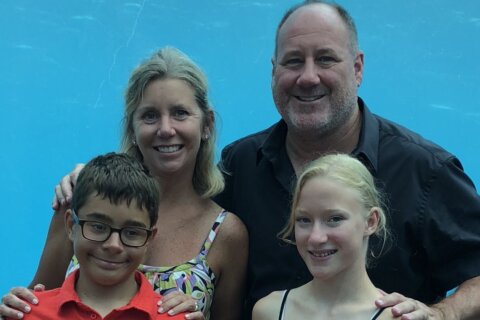This content is sponsored by Melwood.
Discussions on diversity, equity and inclusion have intensified in the last year amid recent events that reinforced the critical need in the U.S. to address these issues. As companies and organizations embark on or continue their efforts to educate themselves and take action, people with disabilities must be a part of the conversation.
“We’ve seen, through the last few decades, a push for more diversity in the workplace. Unfortunately, people with disabilities — particularly those with invisible disabilities — are still regularly excluded from these initiatives,” said Larysa Kautz, president and CEO of Melwood, a leading national employer and advocate for people with disabilities and injured veterans. Melwood has been providing job training and opportunities for people with disabilities for nearly 60 years in the D.C. area and beyond.
Disability includes a broad range of physical and mental conditions that are both visible and invisible. Coined in 1998, neurodiversity is based on the idea that each brain is different, with some more different from others, author Jason Tougaw wrote in Psychology Today. Tougaw describes the neurodiversity movement as being “dedicated to eradicating stigmas associated with neurological difference, or neurodivergence, and in making it clear that a history of medical and social misunderstandings and maltreatment have caused a great deal of suffering and prevented a great deal of thriving among neurodivergent people.”
“When we start talking in terms of neurodiversity, we’re recognizing that, for all of us, there’s variation in our neurocognitive function, and how we learn and how we process information. So a neurodivergence, like autism, is just a variation in that whole spectrum of diversity,” said Scott Gibson, Melwood’s chief strategy officer.
The concept is growing in acceptance, particularly the idea that “autism and other neurocognitive disabilities are natural differences rather than afflictions,” The Washington Post reported. And companies are starting to jump on board.
Sean Hoffman is a risk partner for KPMG’s government practices. While the company’s neurodiversity journey is still relatively early, “We recognized some time ago that we wanted to expand our employment of people with autism.” In pursuing that goal, KPMG learned that autism is just “one flavor of neurodiversity,” Hoffman said.
The company is ramping up the hiring of neurodiverse individuals and has been working with Melwood.
As part of its ongoing workforce development and advocacy efforts, Melwood partners with employers, including government agencies and leading technology firms that are trying to figure out how to embrace inclusion and neurodiversity. Melwood supports its partners through every step of the process, helping them refine the interview process, identify talent, set up accommodations, and equip employees to facilitate effective integration into teams.
A great example of this started just a few months before the pandemic made a significant impact in the U.S. KPMG needed to fill an IT position in its Tysons, Virginia, office. Melwood helped KPMG set up an inclusive interview process and provided several candidates who were graduates of Melwood’s abilIT program who would have the skills that KPMG was seeking.
“They helped us set up the right interview techniques such that we could appropriately assess the candidates. They provided training and we were able to have some really powerful interviews,” Hoffman said.
Gibson explained that hiring somebody for a first job is often based on rapport created during one short interview conversation because the potential employee may not have built up a resume that shows skill yet.
“Unfortunately, that type of social interaction and making a hiring decision based on rapport could end up needlessly keeping autistic talent out of consideration,” Gibson said, adding that Melwood has helped private companies and government agencies figure out how to build an assessment that identifies talent and “gets around artificial barriers.”
This includes practical exercises, simulations of the type of work that would be done or challenges for a person to solve. “That way, the employer is actually assessing skill and not necessarily just interaction,” Gibson said.
KPMG eventually offered the IT position to a talented individual who is well-respected by his teammates and leadership.
“When I think of our colleague’s trajectory, prior to working at KPMG, he was stocking shelves. Nothing wrong with stocking shelves, but it wasn’t his career aspiration. He wanted to be doing something very different. And now, he’s got the opportunity to work in one of the largest firms in the world, serving some of our biggest clients,” Hoffman said.
Gibson said that about one in fifty-four children is diagnosed as on the autism spectrum — a significant portion of the population.
“We know now because of increased understanding of neurodiversity, and increased understanding of disability, that more Americans are affected by disability. We just simply can’t afford to leave that potential untapped,” Gibson said.
But it’s more than just a moral imperative, it’s also an economic and workforce development imperative.
“They contribute to the bottom line of an organization. When you have true diversity, including neurodiversity and diversity of abilities, then you have a workforce that has a higher morale, a better culture and more innovation and creativity,” Kautz said.
A 2018 report looked at 45 companies that created specialized disability policies and practices. It found on average that the companies had 28% higher revenue, double the net income, and a 30% higher economic profit margin over the four-year period analyzed, Kautz said. “It’s not just charity; it’s not just the right thing to do. It’s really good corporate citizenship and a solid investment in your bottom line.”
Gibson said that when companies hire people recognizing that there’s a whole spectrum of neurodiversity, it opens the talent pool up to people who analyze data and think about challenges differently.
At KPMG, not only have its neurodiverse employees solved the company’s talent-search problems, they are also having an impact on its clients.
“Neurodivergent individuals bring a unique perspective and way of looking at things, and so, as a consequence, bring fresh, new creative ideas to our clients,” Hoffman said.
Hoffman said that people involved in KPMG’s efforts to hire people with disabilities have expressed how rewarding it is and how it encourages everyone on the team to be innovative and creative.
“It lines up well with one of KPMG’s corporate values, ‘For Better,’ which means making sure that we’re doing things that are not just good for our bottom line, but also good for society,” Hoffman said.
National Disability Employment Awareness Month, or NDEAM, is held each October to commemorate the contributions of people with disabilities to the workplace, according to the Labor Department. This year’s theme is “America’s Recovery: Powered by Inclusion,” an acknowledgment of the recovery from the COVID-19 pandemic.
Kautz said that there’s an assumption by employers that accommodations are just going to be way too expensive, or that it’s going to be very difficult to accommodate someone with a disability.
“And there is still just this fear of the unknown with respect to people with intellectual and developmental disabilities, cognitive disabilities,” she said.
The Job Accommodation Network‘s 2020 cost to grant an accommodation is about $500 on average, according to Gibson.
“The overwhelming majority of accommodations are still free. There are things like flexible scheduling or allowing telework. Ironically, telework, before COVID, was one of the most requested and most often denied accommodations,” Gibson said.
The unemployment rate among people with disabilities before the pandemic was around 7%, and currently, it has doubled, Kautz said. Unemployment for people with autism is a staggering 85%.
“So even with this plethora of companies out there that are looking for workers for vacant jobs, people with disabilities are still unemployed and underemployed.”
For companies looking for untapped talent who can increase innovation and their bottom line by employing people who have a unique perspective, there are nonprofits, such as Melwood, throughout the country.
“We’re happy to be a resource for employers, and we do a lot of training and we even put on events in months like October that are about disability employment,” Gibson said.
There are other resources, as well, such as the Job Accommodation Network, which is free and can help employers think through job accommodations required to support an individual
“I would also suggest that people look at the website for the U.S. Department of Labor’s Office of Disability Employment Policy,” which is an advice and best practices agency, Gibson said.
Hoffman agrees that the first thing companies should do is to get help and connect with people and groups that have done the work of employing people with disabilities.
“Don’t try to go it alone or reinvent the wheel,” Hoffman said.
Then when you have the proper help, make sure that your company’s leadership has your back. “When you have this kind of backing, this recognition that this is good for the firm, good for society, you start to get things moving along,” Hoffman said.
And lastly, make sure to get lots of people involved.
“One of the things you’ll find with neurodiversity is the more you start talking to people, everyone seems to have a connection, and everyone wants to get involved,” Hoffman said.







